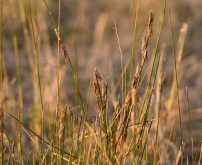On BASF’s 2019 Herbicide Resistance Management Webinar in March, Andrew Reid, BASF technical service specialist, said it’s always easier to manage herbicide resistant weeds before you have them in your field.
One way to do this is to keep things clean. “Cleanliness is key,” Reid said. For example, if you don’t clean your combine after harvesting a very weedy field, you could introduce those weeds to a field where they hadn’t been before.
Reid recommends using several weed control strategies — if one isn’t perfect, you have another to back it up. BASF calls this “The Advanced Weed Control Program.” It involves using good agronomics, and also remembering to choose multiple modes of action when you’re selecting herbicides.
Read Also

In times of mandatory joy, try to find contentment
If we’re not feeling the joy at a time of year that seems to insist on over-the-top moments of happiness, we can allow ourselves to just try for fulfilled or content, farm family coach Kalynn Spain suggests.
A webinar participant wondered what would happen if a grower chose a herbicide that “suppressed” a weed, rather than a product like glyphosate that would “control” that weed. Reid pointed out that, “If you’re using a herbicide that only suppresses the weed, in a lot of cases that lessens selection pressure for resistance.” You still need to follow up with a different mode of action, to get rid of the weeds, but, as Reid says, “Your shift from susceptible to resistant will actually be slower.”















